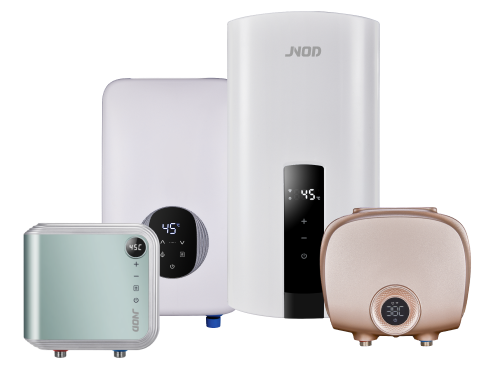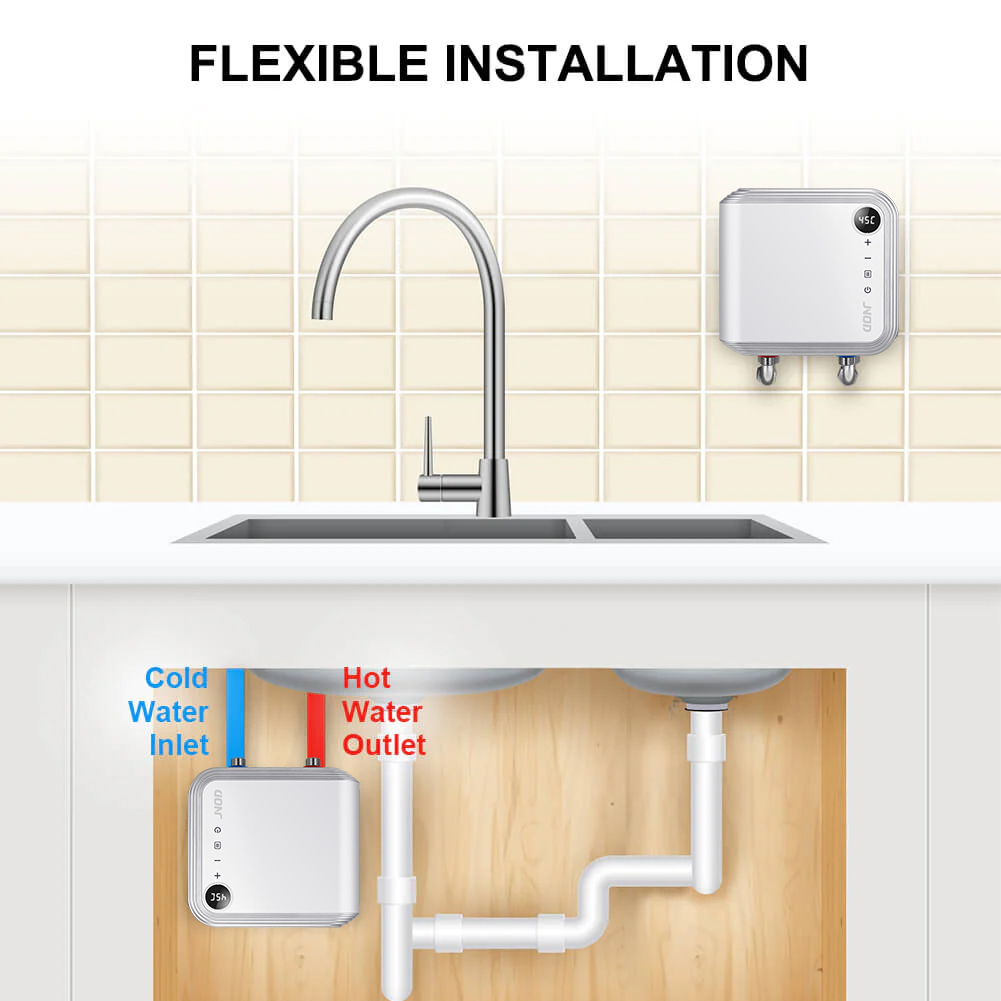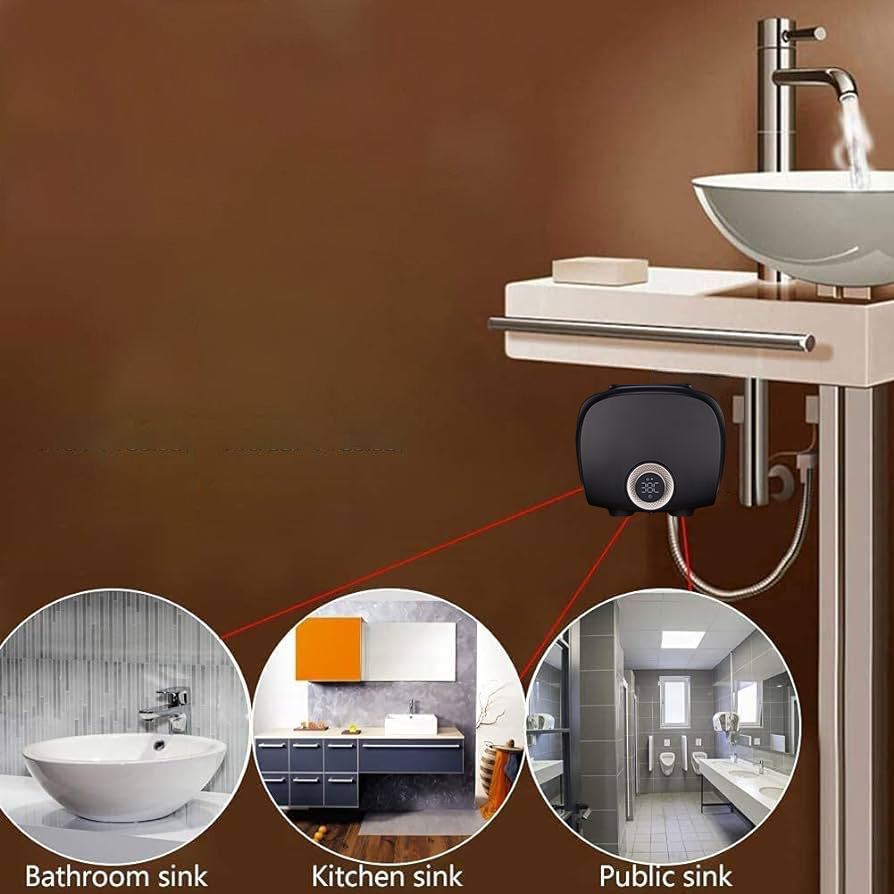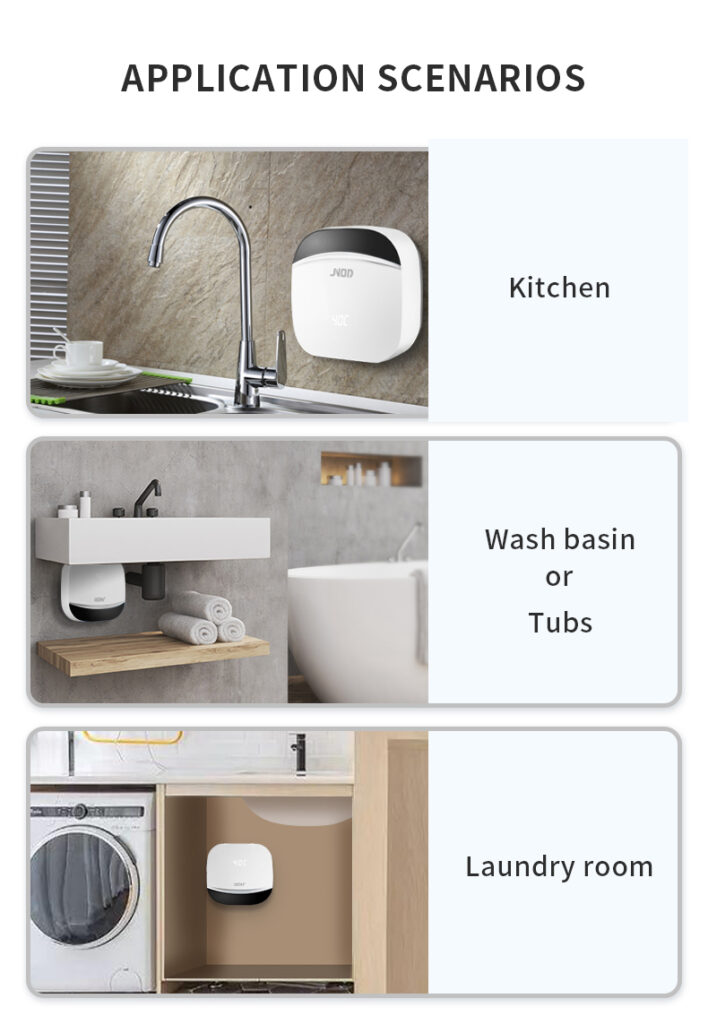
Tailor to Any Applications, Any Hot Water Needs with JNOD.
Your Trusted Partner for Energy-Efficient and Reliable Electric Hot Water Solutions.

Under kitchen sink water heaters are one of my favorite things in life. When you turn it on, you immediately have access to hot water for washing, cooking, and other tasks. A common household appliance that is even considered a must-have appliance is the on-demand kitchen water heater.
You can definitely get this convenience, but it’s unlikely to be the same as what we have.
First of all, there are two installation methods for kitchen water heaters,
In addition, almost all kitchen water heaters are electric water heaters as well as gas water heaters. But venting gas appliances in an enclosed area, such as a sink cabinet, can be very challenging. Additionally, there are tank and tankless designs.
However, isn’t an under-sink water heater unnecessary if you already have a central heat source? Possibly, if there isn’t much space between the sink and the main water heater. The under-sink water heater, however, can be a water-saving asset if it isn’t.
Take into account the fact that you always waste a gallon of water if your faucet’s flow rate is two gallons per minute, which is typical, and you have to wait 30 seconds for hot water. You could be dumping 600 gallons of water down the drain each month if you use hot water three times per day. That can be avoided with the help of an under-sink water heater.
What is an under counter water heater?
Under-sink water heaters, also known as point-of-use water heaters, are basically smaller versions of whole-house water heaters that provide instant hot water at the sink.
Because tank-type under sink water heaters is designed for tight spaces, they have limited storage capacity—usually two and a half to four gallons. Flow rates depend on the main line, but most can handle three gallons per minute.
Under-sink water heaters can be connected to the main hot or cold-water supply. When the water heater is the only source of hot water, it is connected to a cold source. But when it provides hot water faster, it is usually connected to a hot water supply system.
Different Under-Sink Water Heaters
All under-sink water heaters are electric, but there are a few variations:
Water tank type and instant heating type: The water tank type can only supply preheated hot water in the water tank. Once used, it takes a certain amount of time to preheat the water in the water tank again. Tankless on-demand only activates when water is needed and uses more power when in use, but uses almost no energy when in standby.

Voltage: Available in 110-120 volt and 220-240 volt models. Since they require more instantaneous power, many require 220-240 volts, while tank-style models often only require 110-120 volts. Models that run on lower voltages usually have plugs, while those that run on higher voltages are hardwired.
Vertical vs. suspended: Tank-style water heaters are typically placed at the bottom of a cabinet, while on-demand models hang from the side.
What is the price of an under counter water heater?
Depending on the power and whether there are additional functions such as WiFi, constant temperature or non-constant temperature, the price will be different. Please contact JNOD for details, and we will provide you with a better solution.
Advantages and disadvantages of under-sink water heaters
Instant hot water brings additional benefits:
Reduce water waste;
There is almost no energy consumption during standby, reducing electricity bills.
Convenient for cooking or cleaning.
Cheap and easy to install.
Low or even maintenance-free.
Small enough to be hidden under the sink.
Constant temperature model: no water temperature fluctuations.
Some disadvantages to consider:
Non-constant temperature model: water temperature fluctuates;
Water tank type: The hot water supply is limited and may run out quickly.

How to Set Up an Under-Sink Water Heater
If you have some basic plumbing knowledge, you can make your own under-sink water heater, but you need a power source and enough space in the cabinet.
You can remodel the cabinet yourself if you need to. But if you require a new electrical circuit, you’ll probably need to employ an electrician. Installation entails the following once the requirements have been satisfied:
Install a tee in the pipe to allow you to branch the sink if it only has cold water. The water heater, which connects to the faucet with a separate hose, is reached by two branches, one of which is directed toward the water faucet.
For more details, please contact JNOD – your professional water heater manufacturer.

Your Trusted Partner for Energy-Efficient and Reliable Electric Hot Water Solutions.
Copyright © 2023, JNOD All rights reserved. Powered by MML